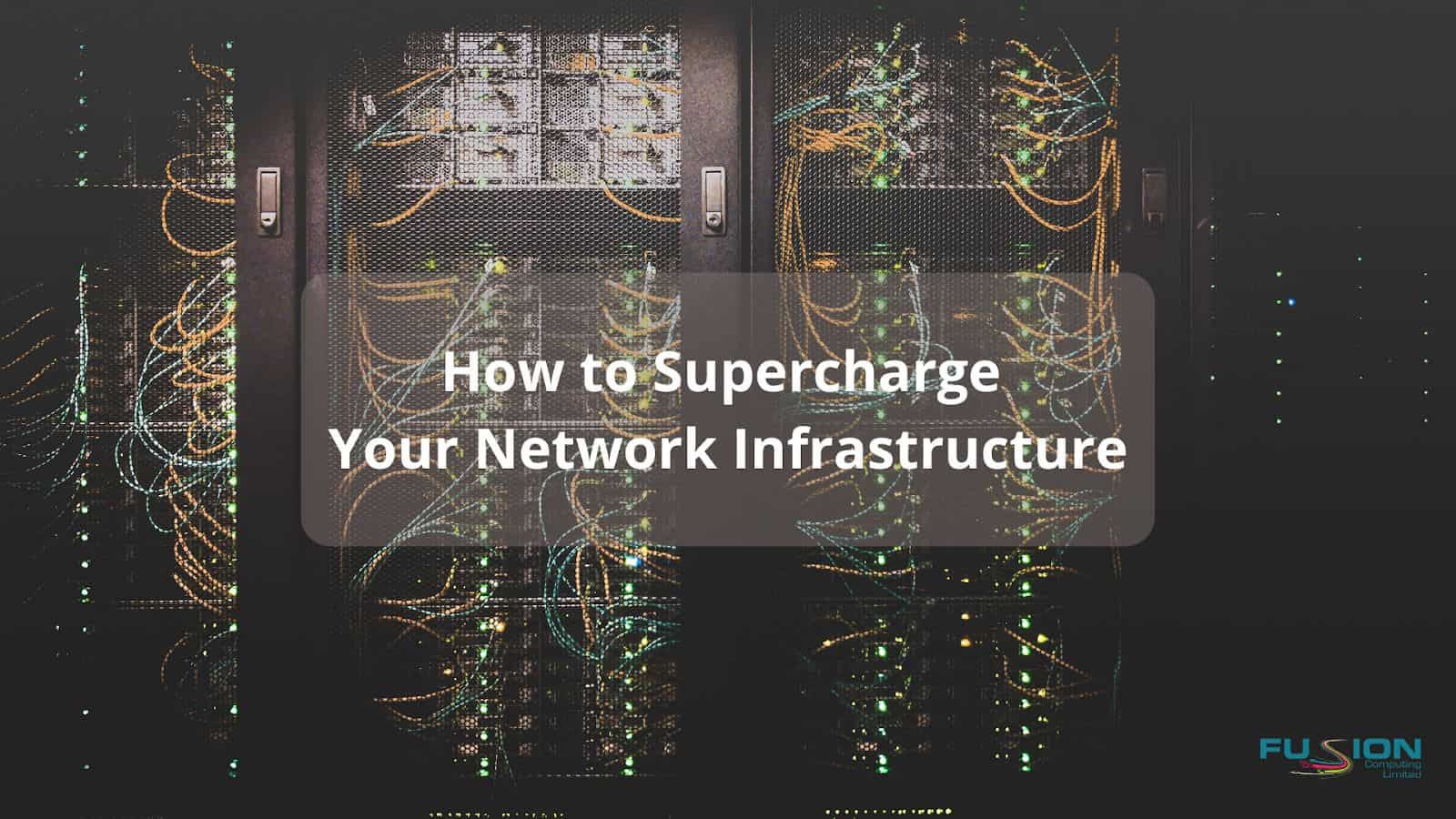You’ll hear the words ‘network infrastructure’ used at virtually every technical meeting but not sure exactly what is a network infrastructure? Here’s a simple network infrastructure definition:
Network infrastructure includes the array of hardware and software that connects users, processes, applications, services and external networks to enable the network connectivity, communications, operations and management required by a business in today’s digital world.
What Does Network Infrastructure Consist Of?
IT network infrastructure technology is made up of hardware including routers, switches, LAN cards and cables, software such as operating systems and firewalls, and network infrastructure services such as DSL, wireless protocols and fibre optic cables.
Networks can be wired, wireless and a combination of the two. In our increasingly remote world, the trend is quickly moving towards wireless network infrastructure and the hybrid workplace (where employees can work from anywhere and businesses are globally interconnected).
Importance of an IT Network Infrastructure That Supports Your Business
Businesses that achieve truly wireless network environments and digital transformation typically find that their IT becomes more cost-effective and that they become more efficient, high performing, agile and better able to attract and retain the best talent.
Modernizing network infrastructures for the remote age, however, is easier said than done. Businesses may find that replacing their aging network infrastructure would disrupt operations, or that the scale of investment and education required is far bigger than they expected.
Despite these challenges, it’s likely the worst decision is to stand still and stick with outdated network infrastructure solutions in a world that is fast leaving behind the old ways of networking and IT infrastructure. With that in mind, let’s take a look at some of the ways a business can supercharge its networking…
Is Your Network Infrastructure Holding You Back?Get a free 30-minute meeting to identify performance bottlenecks and vulnerabilities in your network. |
Cloud, Cloud, Cloud (What Are You Waiting For?)
Cloud has been on the tip of every IT leader’s tongue for a decade now, and you may already have this one checked off your list. If not, you are missing out on the opportunity to move your business from a capex-based operating model to a much more efficient consumption-based model that reduces costs and makes the business more lightweight and agile.
Cloud comes in various flavours, including public cloud, private cloud, hybrid cloud, and colocation facilities. The appropriate setup for your business is determined by your needs and application requirements.
Many businesses, especially in the early days of cloud computing, adopted cloud technology but didn’t finish the job. We have seen many cases of cloud services slapped on top of legacy infrastructure, inefficient use of cloud platforms, and cloud implementations that were not properly introduced to the wider teams and therefore criminally underused.
Cloud technology is now so advanced that it lets small and mid-sized companies take advantage of enterprise-level capabilities at a fraction of the cost.
Simple, Get Bigger Pipes
Sometimes we overlook the best moves because they are staring us right in the face. The simple fact is that bandwidth must scale alongside the explosion in data, applications and service.
You might find that you need to upgrade to, say, 2.5Gbps client networking and 10Gbps server network solutions to keep your network running smoothly and handle the massive volume of network activity caused by the shift to hybrid work and global application usage.
Adopt AI-Driven Reporting And Automation Tools
With networks becoming more complex and data-heavy, it can be harder for IT staff to keep up with monitoring and management of network services.
Artificial intelligence tools can do the heavy lifting of administering the network, optimizing data centers, identifying threats and networking security issues so that your team is free to focus on innovation and improvement as your business and network scales.
Consider Containers
As the business world moves towards consumption-based IT usage, the concept of container networking has taken off because it’s proven to be a more efficient way of delivering application services.
By separating applications into independent boxes, containers act like virtual machines but can run large, distributed applications with low overhead, which allows a business to operate in a much leaner way than if it deploys a full complement of physical servers or virtual machines.
Take Another Look at VPNs
Many businesses have taken the shift to remote work in 2020 as an opportunity to permanently forego the office experience. Those that did can do worse than take a closer look at their VPN (virtual private network) strategy to ensure it best serves remote employees.
A solid VPN will make security the number one priority while also enabling seamless productivity and mobility for employees.
Consider SD-WAN for Remote Workers
Another consideration for businesses sticking with remote work is software-defined WANs (SD-WANs). These wide-area networks provide businesses with better access, control and resilience while maximizing the quality of remote access to cloud applications.
SD-WAN endpoints provide a better always-on experience than VPNs, but that comes at a higher cost.
Maximize Your Network Infrastructure: |
Get Wise to Wi-Fi 6
Wi-Fi 6 wireless access points are now offered by pretty much every vendor on the market, and they take wireless networks to the next level. They work with high-speed wired networking and will give your business the flexibility needed to welcome hybrid workers back to your offices.
Helping Businesses Like Yours Make Smarter Decisions About IT and Network Infrastructure
As one of Toronto’s most technically capable managed IT service providers, Fusion Computing has been trusted to help businesses across the GTA define their network infrastructure roadmap. Contact us today to learn more about the best ways to modernize your information technology and network.


